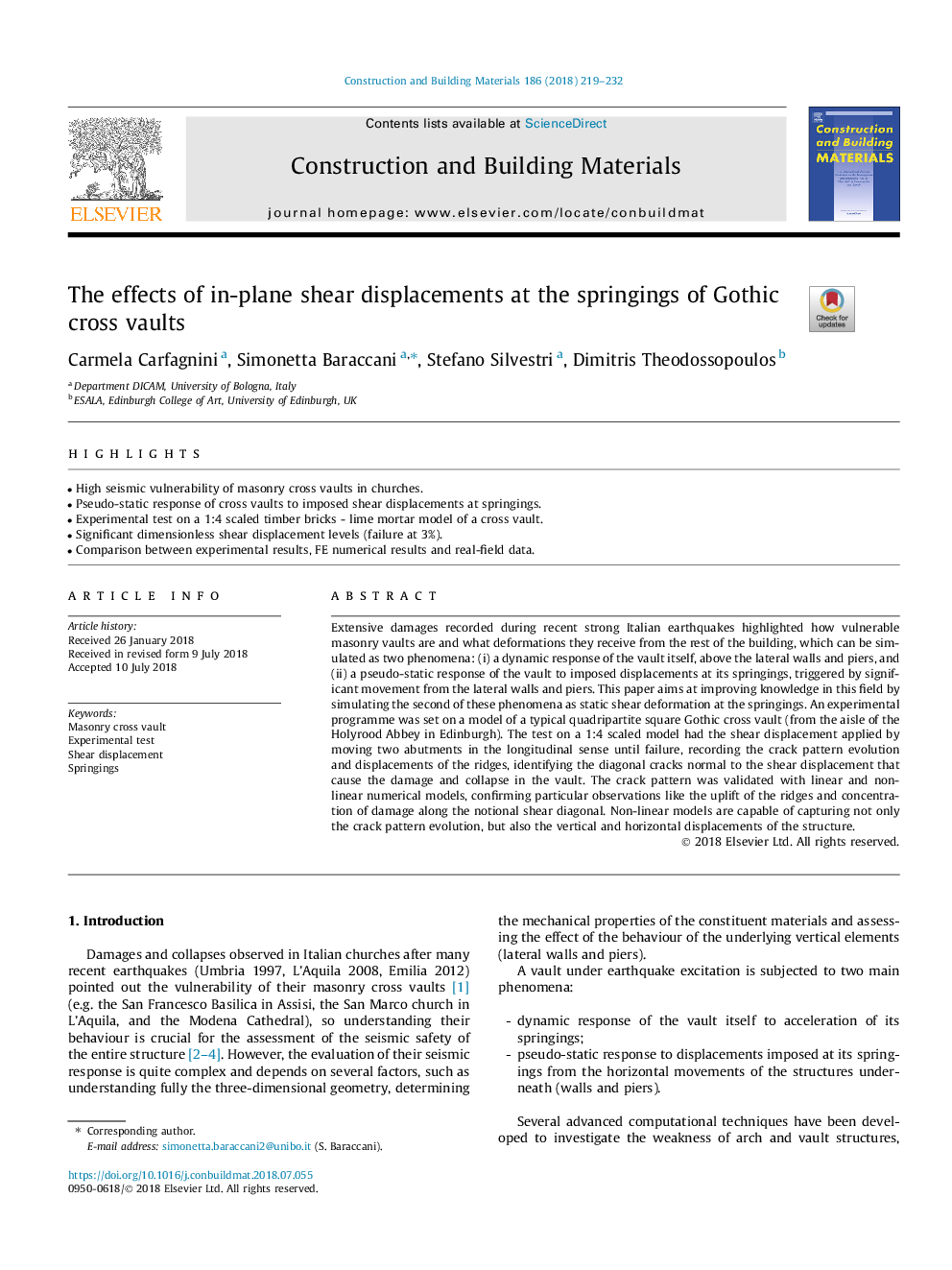| Article ID | Journal | Published Year | Pages | File Type |
|---|---|---|---|---|
| 6711590 | Construction and Building Materials | 2018 | 14 Pages |
Abstract
Extensive damages recorded during recent strong Italian earthquakes highlighted how vulnerable masonry vaults are and what deformations they receive from the rest of the building, which can be simulated as two phenomena: (i) a dynamic response of the vault itself, above the lateral walls and piers, and (ii) a pseudo-static response of the vault to imposed displacements at its springings, triggered by significant movement from the lateral walls and piers. This paper aims at improving knowledge in this field by simulating the second of these phenomena as static shear deformation at the springings. An experimental programme was set on a model of a typical quadripartite square Gothic cross vault (from the aisle of the Holyrood Abbey in Edinburgh). The test on a 1:4 scaled model had the shear displacement applied by moving two abutments in the longitudinal sense until failure, recording the crack pattern evolution and displacements of the ridges, identifying the diagonal cracks normal to the shear displacement that cause the damage and collapse in the vault. The crack pattern was validated with linear and non-linear numerical models, confirming particular observations like the uplift of the ridges and concentration of damage along the notional shear diagonal. Non-linear models are capable of capturing not only the crack pattern evolution, but also the vertical and horizontal displacements of the structure.
Keywords
Related Topics
Physical Sciences and Engineering
Engineering
Civil and Structural Engineering
Authors
Carmela Carfagnini, Simonetta Baraccani, Stefano Silvestri, Dimitris Theodossopoulos,
